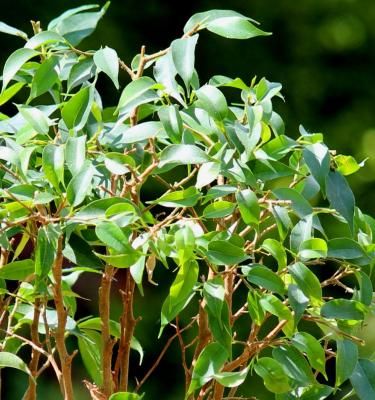

How to grow & care for a Weeping Fig
Weeping Fig (Ficus benjamina) are elegant houseplants loved for their glossy leaves that hang gracefully from arching branches. Weeping Figs are fast growing plants that are ideal for beginners.
Give your Weeping Fig a bright spot with plenty of indirect sunlight - it will handle a little direct morning sun. Weeping Figs grow outdoors in the tropics - so they love a warm humid spot. To increase the humidity around it, try grouping it with other plants, sitting it on a saucer of rocks that you top with water or keeping it away from heating/cooling vents.
Top 5 tips for growing Weeping Fig
- Weeping Fig prefer a warm, bright spot with indirect sunlight or morning sun only.
- Use a premium potting mix like Scotts Osmocote Premium Potting Mix for Indoor Plants to give your plant the best start possible.
- Once you’ve found the perfect spot for your Weeping Fig, don’t move it around! They don’t like drastic changes in temperature or light.
- Fertilise Weeping Figs with an indoor plant fertiliser like Scotts Osmocote Pour+Feed for Indoor Plants once a month during spring and summer, to encourage strong healthy growth.
- Weeping Figs prefer a warm and humid environment away from drying drafts from heaters or air conditioners.
Shopping List
- A Weeping Fig plant
- A suitable pot
- Scotts Osmocote Premium Potting Mix
- Scotts Osmocote Controlled Release Fertiliser for Indoor Plants or Scotts Osmocote Pour+Feed for Indoor Plants
- A garden trowel
- Defender Pyrethrum Insect Spray
Growing in a pot
Choose a pot for your Weeping Fig that’s no more than 3 times the size of the original nursery pot - make sure it has drainage holes or use a black plastic pot that sits snugly inside a cover-pot or cache pot (pot with no holes).
Half fill your pot with Scotts Osmocote Premium Potting Mix and gently remove the Weeping Fig from the nursery pot and position it into the potting mix, backfill around root ball with more potting mix so that the potting mix is level with, or slightly below, the top of the pot.
Water your new Weeping Fig in well and tip out any excess water from the base of the cover-pot or saucer (if using). These plants prefer a soil that is moist, but never soggy - water them when once the top 2-3cm of potting mix is dry to the touch.
Never let water pool in the base of cover-pots or in saucers as your Weeping Fig will quickly rot and die if their potting mix remains soggy or waterlogged.
Fertilising & Care
Fertilise Weeping Figs in spring and summer with an indoor plant fertiliser to encourage new growth. Use Scotts Osmocote Pour+Feed for Indoor Plants fortnightly - this is a simple-to-use ‘measure and pour’ feed that contains the right balance of nutrients. If you’d prefer a longer-term fertilising product, with fewer applications, apply Scotts Osmocote Controlled Release Fertiliser for Indoor Plants in early spring and again in early autumn - this product feeds for up to 6 months.
In the warmer months of spring and summer Weeping Figs will appreciate more regular watering and higher humidity. To increase the humidity around your plant, group it together with other plants to create a microclimate or mist them with a spray bottle regularly. You can also sit their pot on a saucer filled with pebbles and water - as the water evaporates it will humidify the air.
Weeping Figs can be pruned to shape as you’d like - just be careful of their toxic sap. Remove any dead or damaged leaves or branches throughout the year.
To remove the dust that collects on Weeping Figs leaves, use a feather duster, pop it into the shower or bring it outside for a gentle hose off.
Pests & Diseases
Weeping Figs can sometimes become infested with scale, mites, or mealybugs - regularly check at the base of the stems and on the backs of leaves for signs of these pests - use Defender Pyrethrum Insect Spray to control them if needed.
Yellowing leaves on Weeping Figs can be a sign of overwatering or underfeeding - check your watering and fertilising routine to fix this problem.



